Educating in Changing Times
Resources for Schooling at Home
 Photo by Kelly Lacy from Pexels
Photo by Kelly Lacy from Pexels
A ship lost at sea for many days suddenly sighted a friendly vessel. From the mast of the unfortunate vessel was seen a signal: “Water, water. We die of thirst.” The answer from the friendly vessel at once came back: “Cast down your bucket where you are.” A second time, the signal, “Water, send us water!” went up from the distressed vessel. And was answered: “Cast down your bucket where you are.” A third and fourth signal for water was answered: “Cast down your bucket where you are.” The captain of the distressed vessel, at last heeding the injunction, cast down his bucket and it came up full of fresh, sparkling water from the mouth of the Amazon River. From Booker T. Washington’s “Atlanta Compromise Speech,” 1895.
The lost ship with its thirsty crew had unknowingly entered the fresh waters of the mouth of the Amazon. Ironically, the crew dying of thirst was floating in the very resource it needed for survival. Sometimes we simply need to open our eyes to perceive that our necessary resources are at hand—at our fingertips.
When it was time for Moses to transition from being a shepherd to becoming a leader of the Israelites, his rod was repurposed from a shepherd’s crook to a leader’s staff. The shepherd’s staff became the rod of God.
In the struggle to transition from schooling at school to schooling at home, we do well to remember these stories. We are surrounded with multiple resources and are using multiple tools. But we need eyes to perceive which of our multiple possessions are also resources. And we may need to repurpose some familiar tools for new applications.
School teachers consider many factors in planning their work. Among them are…
- The purpose of our endeavor—what understandings, skills, habits, and “fruit” we wish to cultivate…
- The pupil—his age, background, previous learning, skill level, attitudes, interests, motivation…
- The subjects—their significance and meaning, content, scope, how they may “fit” the pupil…
- The teaching/learning setting—classroom, classmates, resources on hand, time available…
- The methodologies—how we go about teaching: what we do, what pupils do, types of activities, how materials are used, how we evaluate/grade…
These five steps apply to both schooling at school and schooling at home. The first three are similar for both settings. However, d and e differ greatly from the school to the home setting, and require radical adjustments in teacher planning.
For the setting (d), teachers must vicariously “enter into” the atmosphere of each individual home setting, putting themselves into each pupil’s home, shoes, and skin, feeling with him/her, and looking at the whole learning endeavor through their pupil’s eyes and heart. They must consider each home’s available resources and tools; its strengths and limitations. What was once considered “individualized instruction” to meet specific pupil needs must include “individualized plans” for specific homes. For example, plans for a single second grade pupil who is the oldest in the family, whose dad works away from home, and whose mother is busy with three pre-schoolers will differ from those for a second grade pupil who is the youngest in the family, has three older siblings also working in the schooling at home program, has a dad working at home, and a mother with more time available to help.
Teachers must plan an approach and activities (e) for learning that can “live” in the home environment. They must indeed have faith that the “dry bones” (materials, directions, and activities) they deliver to the home can “live” and thrive (Eze. 37:2-3), given the setting, attitudes, abilities, and resources of the family.
Do not frustrate. This could well be the guiding caution for e. (Compare to the ancient maxim for doctors: “Do no harm.”) Ephesians 6:4 warns us to avoid provoking our children to anger/wrath/exasperation. One way to frustrate is to ask pupils/homes to do the impossible. Shall the pupil be asked to do hard work? Yes. To follow disciplined routines? Yes. But these must be achievable. They must not be “too grievous to be borne.”To frustrate is to set something before the child (and/or his parents) that is unattainable. To be frustrated is to be set in a maze with no outlet, to be asked to lift yourself by your own bootstraps, to make bricks without straw. To do something that you cannot do, no matter how good your intentions or how hard you try. Frustrating approaches to learning are offenses that can provoke antipathy in the pupil toward what may have otherwise become his favorite subject. And frustrations can at the same time elicit despair in parents with the whole project. Probably the quickest way to unwittingly sabotage any schooling at home endeavor is to build frustrations into its warp and woof.
Frustrations take many forms. A few include…
-
- Overload. Expecting too much of even a good thing. It’s hard to survive under a waterfall of even the best water. Another overload would be introducing too much variety at once. While juggling three balls may be challenging, trying to juggle 12 frustrates. Even the skilled blacksmith avoids having too many irons in the fire. Great wisdom and discretion is needed in designing the appropriate load—small loads are not taken seriously; overloads crush.
- Incomprehension. Trying to identify the “main idea” of a paragraph when you have no idea whether the paragraph had any ideas of its own. Borrowing 1 from the ten’s place when you don’t see any 1’s there to borrow. Underlining the helping verbs when you need help to find the main verbs. Pupils (and parents) who do not understand what it is they are to do switch to a coping mode such as underlining random words or hoping to pass by guessing. They shift attention away from the subject to trying to survive. And in the process they develop an antipathy for the whole project.
- Age-inappropriate expectations. “When I was a child, I thought as a child.” So did you. It’s OK for children to think like children. That’s who they are. Understand how your pupil thinks, plan to engage his thinking on those terms, and build/progress onward and upward from there. See the document entitled Age Group Characteristics of Children for ideas to stimulate your thinking as you plan.
The paradox here is that being asked to tackle a challenge is one of the strongest motivators, with great potential for “I thought I could!” euphoria. But there’s a huge difference between “setting your face steadfastly toward” a hard-to-understand task that sheds new light on each succeeding step and being asked to do something if you can’t figure out what it is you are to do, how you are to do it, and what the correct result will look like.
In planning lessons for his pupils, the schooling at home teacher’s work becomes somewhat like that of a writer, who must think ahead to how his work will be received and interpreted. The writer is not present to help interpret his work to the reader. For schooling at home, the teacher must envision what materials his pupils will have available, empathize with the pupils’ home setting and circumstances and patterns. Then he must imagine what kinds of profitable learning assignments and activities are realistic in that setting and communicate this in a way that inspires learning.
Re-purposed tools.
- The format of the familiar Sunday school quarterly could be used as a model for study guides for a schooling at home program. Both a pupil’s edition and a “teacher’s” (actually a parent’s) edition (or supplement) could be produced for use…
- As a study guide for an individual “trade” book that will be used for the month or quarter. The book might be a biography, story book, book of poems, history book, nature study book—or some other subject. The study guide format could provide necessary background/introductory material, supporting illustrations, anecdotes and questions for each lesson, and assignments and activities to do along with supplemental ones to choose from. The teacher/parent supplement could include a variety of ways for the parent to monitor the child’s progress, ideas for cross-age interaction, suggestions for ways to have the child share his learning with the family or others, and directions for quizzing/testing if applicable.
- As a study guide to accompany a standard textbook, such as a math, history or science textbook. Each guide might deal with one or two units of the text. It would break the work down into manageable daily/weekly chunks and provide suggestions for how to master challenging concepts such as making cut-out fractions to understand equivalent denominators. It would particularly focus on ways for the pupil to maximize learning in the home setting by drawing upon home resources.
- Material resources from the home workshop, garden, kitchen, playroom, neighborhood, flower bed.
- People resources such as siblings, extended family, grandparents, and neighbors.
It would anticipate projects that extend the learning and may actually fit the home better than the school, such as developing a flower bed, small raised bed gardening, keeping an animal, or feeding and identifying birds.
- A voice recorder can be used in multiple ways.
- Some learning material can be provided on audio files.
- Pupils can listen to audio files for read-along.
- Pupils can practice reciting, storytelling, or recording answers as an alternative to writing.
- The telephone could be a tool for each teacher to connect with each pupil on a set schedule…to answer questions, listen to verbal assignments, give directions/instructions, and encourage.
Activity Resources
- Routines
Life is very daily. It’s made up of routines. It’s the routines we celebrate as we look back over life. “Do you remember how we always did this…?” Families already have routines—or at least they should! When something is honored by being put on the daily routine, it gains significance. Typical home routines for children include getting up and bedtime routines, self-care/toiletry routines, mealtime routines, chore routines, and family activity routines.
Some routines come and go with the seasons. The power of routines can be harnessed by attaching them to schooling at home work. When the schooling season approaches, the daily routines adjust accordingly. Now the routines include structured book studies, disciplined learning activities, memory work, and focused projects that find their place on the already-existing schedule of routines. The new routines are not a cancerous, malignant tumor unrelated to anything else that happens in the home. They are a necessary addition supplied and supported by thoughtful teachers who have found ways to plan learning that can be integrated into the home setting.
- Storytelling, visiting, chatting
One of the most powerful routines to expand and capitalize upon is the talking times surrounding daily routines such as mealtime conversations, dishwashing times, driving-down-the-road times, and end of the day winding down/devotion times. Without making these into “classes,” parents can stimulate meaningful conversations and discussions related to the ongoing topics their children are currently studying.
- Playing games time
Teachers can design certain learning activities into games that can be included in family game time, without completely usurping the place of traditional games. Some subjects lend themselves to game-type review or drill activities. Flash card use can be incorporated into games.
- Family projects
Projects can become intentional learning projects. Some may require extensive parental involvement; some minimal. Categories can include learning to make specific foods, preserving foods, flower beds and gardening, home maintenance or improvement, service. (See list in Preparing for Schooling at Home”).
Miscellaneous Resources
- Some homes have extensive collections of books; others have few. Schools can provide plans for pupils to take advantage of available books in the individual home based on their availability.
- Some homes make extensive use of electronic technology; others little. Plans can utilize available technology, from stand-alone activities such as electronic flashcards, audio files, and word processing to communication between teacher and home/pupils, to real-time instruction sessions if possible.
- The number of older people available (siblings, relatives, friends) to interact with pupils can be a factor in what the individual pupil can be expected to accomplish.




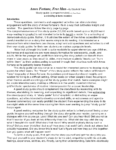
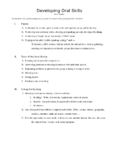

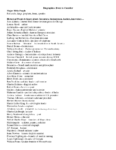
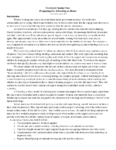
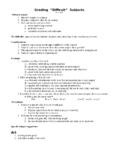
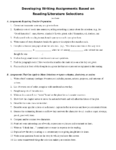
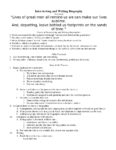
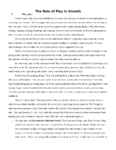
Leave a Reply